
Charline Drappier
Sep 10, 2018
“These shoes are a bit too much to wear at home, but for the American west coast, they are perfect,” she laughs. On a ten-day tour through California and Oregon, Charline is visiting restaurants to promote her family’s champagne house, Drappier. As Head of Sales Marketing and Communication, the 28-year old spends half of her time on the road and in planes around the world spreading the word.
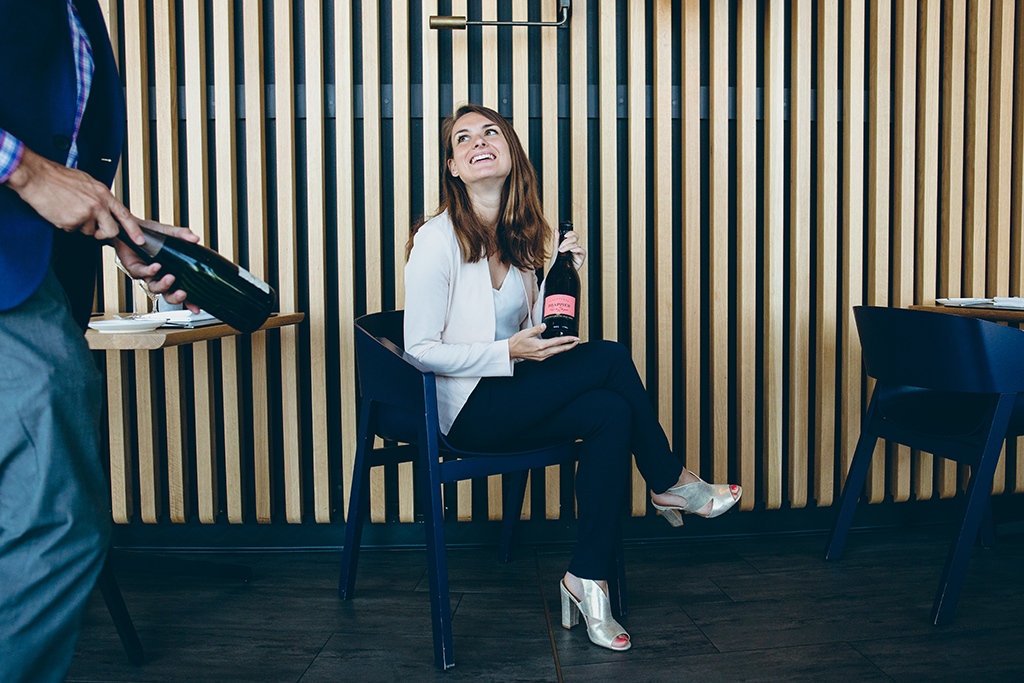
She received a crash course in face-to-face sales in New York, where she spent time knocking on doors and introducing sommeliers to Drappier for the first time. “It was good school[ing] for me to be in the streets, just knocking on doors, saying hey, do you want to taste my champagne and nobody had ever heard about me and slowly step by step, [I was hearing] “wow this is great wine,” she says.
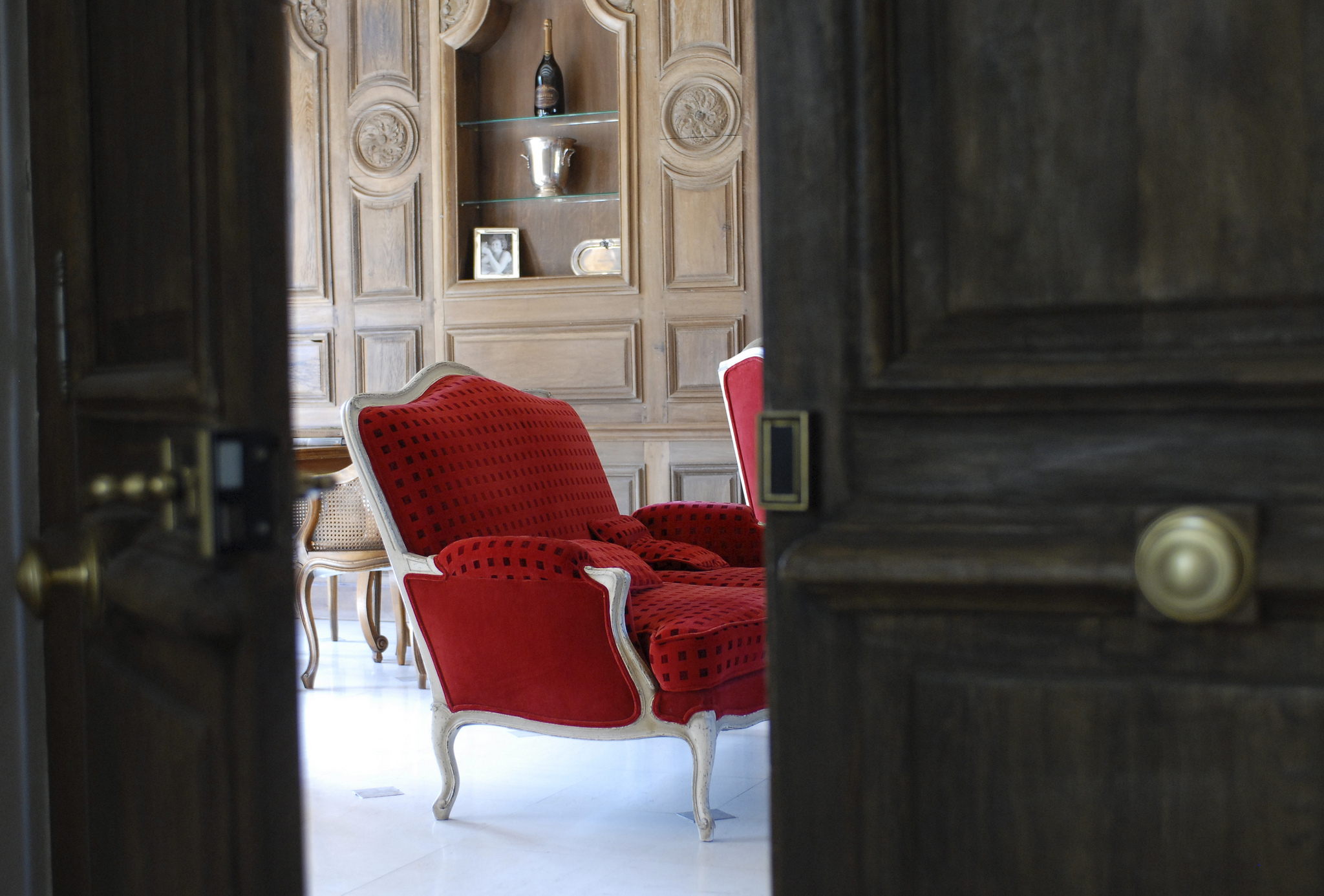
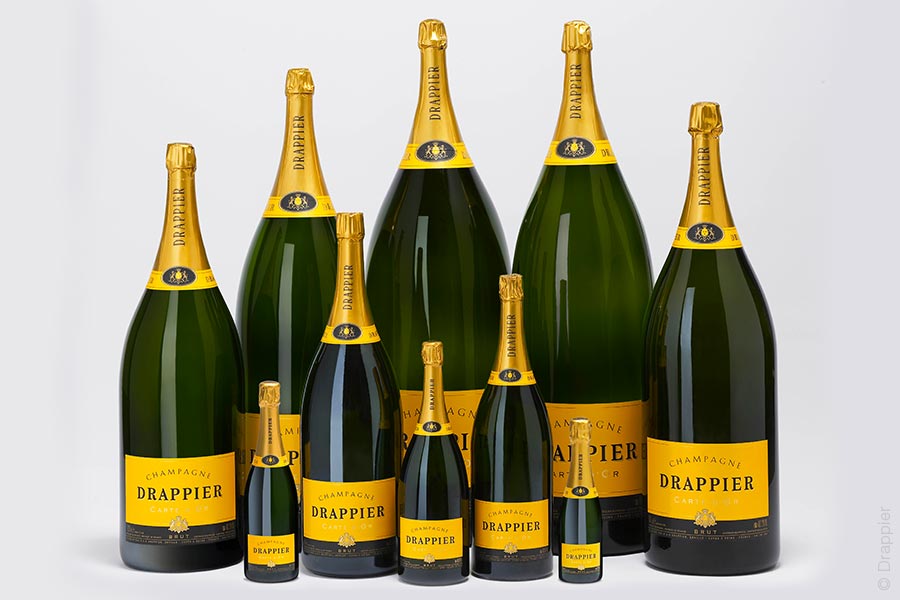
Charline spends the other half of the year in the tiny 139-person village Urville, a two hour drive south from Reims. She grew up in Urville with her two younger brothers, riding a yellow buggy car into the vineyards with her grandfather and playing hide ‘n’ seek endlessly in the family home, hiding amongst red velvet furniture. “Urville is probably where I feel the most complete,” said Charline. “So when I travel I like to get back to this very humble and austere environment. I know I will have the opportunity later in my life to visit all the places, but [I] always [want to] going back to where I came from.”
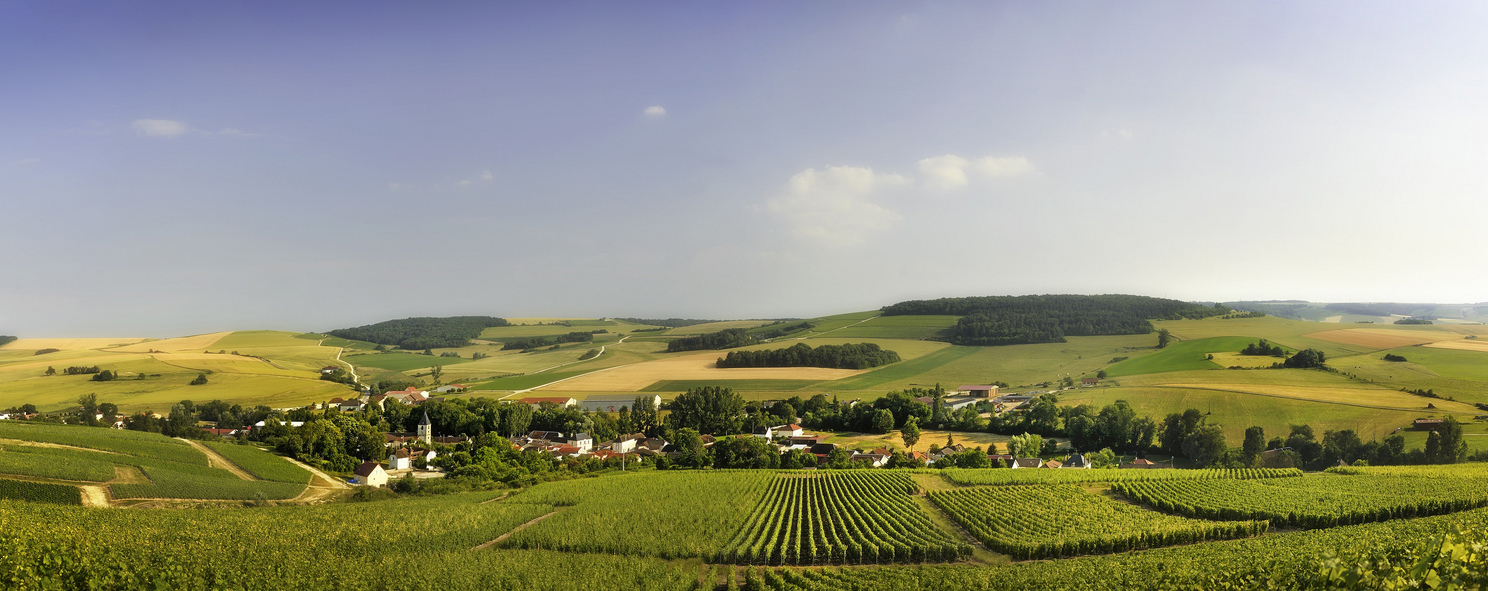
INTERVIEW WITH THE EIGHTH GENERATION DRAPPIER
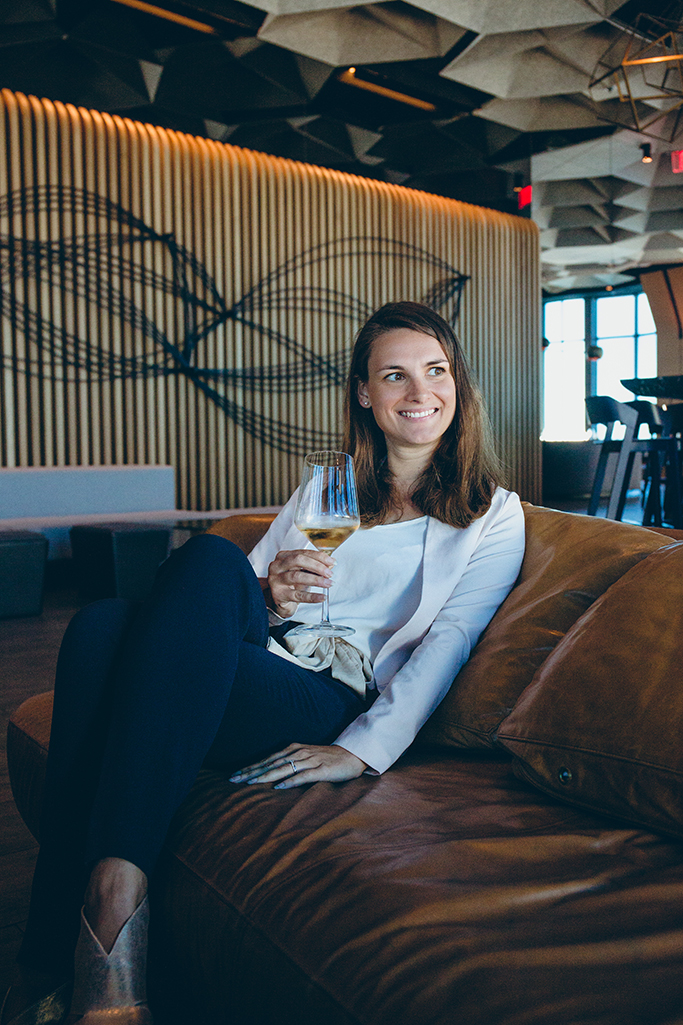
Title: Head of Sales, Marketing and Communication at Champagne Drappier
Hometown: Urville, France
Number of years working in the wine industry: Five years
Guilty Pleasure?
Eating great food. I’m a big food person.
What kind of food?
French food, very simple! Charcuterie. Cheese, bread, that’s all I need. And wine of course.
Last song you downloaded?
The new song [from] Christine and the Queens. She’s a French artist, but I think she’s known in the U.S.
Role Model?
It’s interesting in the world of art and literature, I have my role models I [have] had all my life. A more down to earth answer now is Maggie Henríquez, she’s the CEO of Krug. I’ve always looked at her as being a very strong woman having come where she came from.
What is it like to be part of eight generations of Drappiers?
It’s a great adventure, it gives you a sense of time and of responsibilities. My family is in a very long term approach to life, which I think gives us a completely different perspective on things, since I was born. Never doing something for the day after, [or] for the year after, we’re doing things for the generations to come. Being the eighth generation, I know what it took for the previous generations to do what they did.
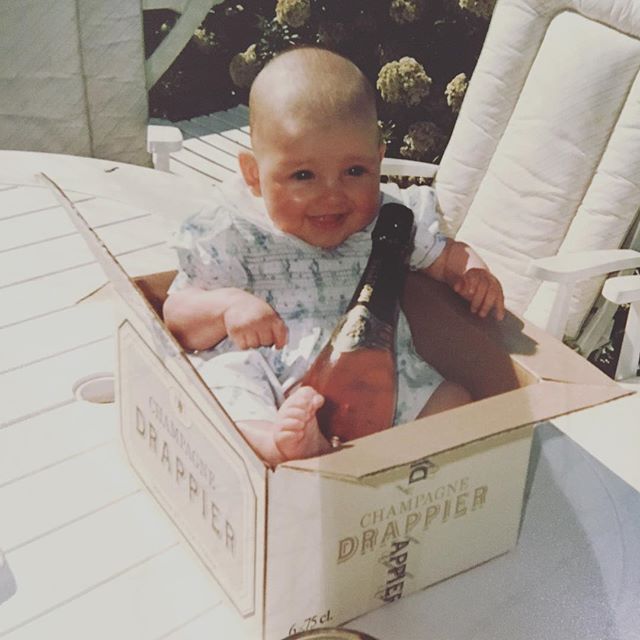
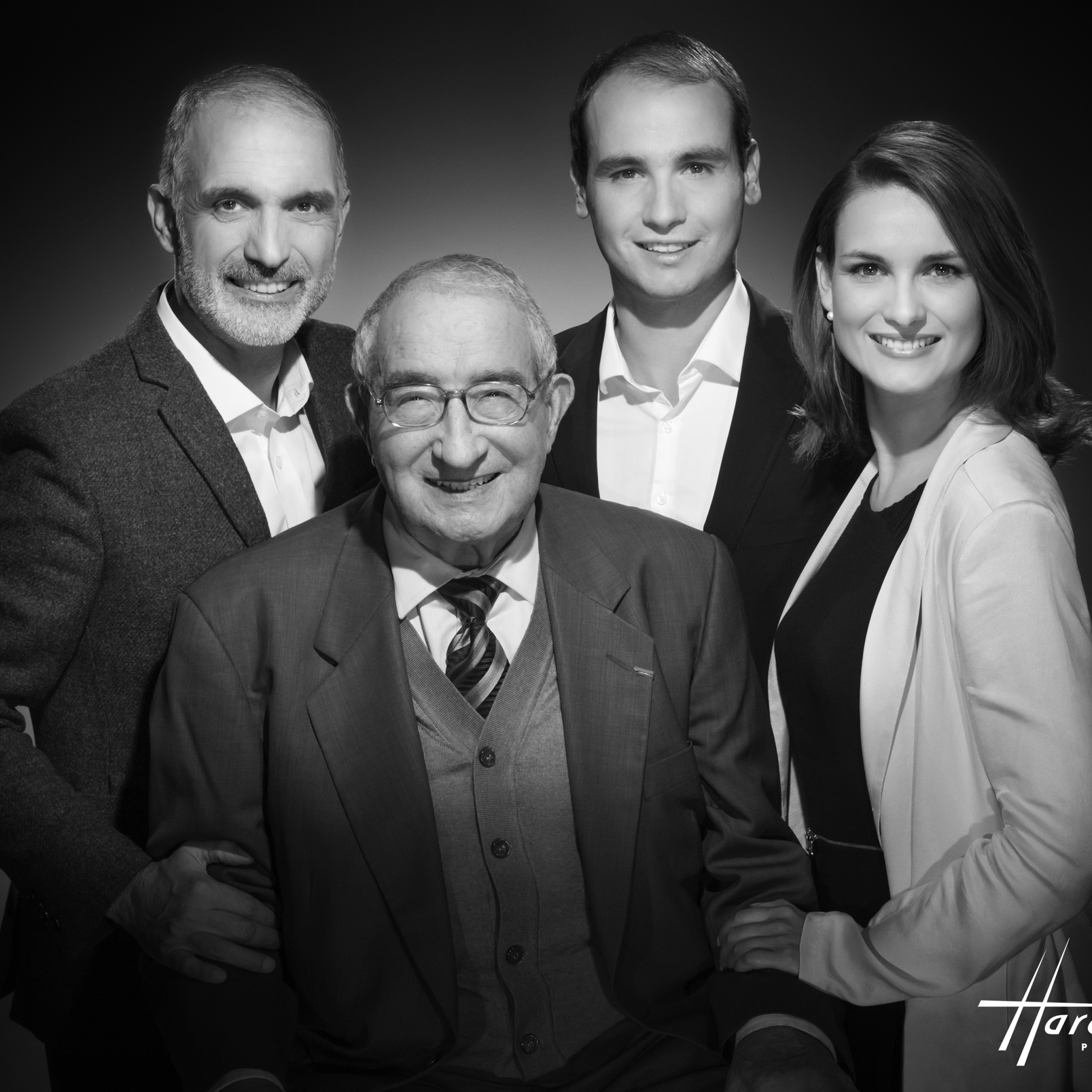
How did the Drappiers end up in Urville?
Our region was very strong because it was at the crossroads of the silk roads that came to Venice in the northern part of Europe. Champagne was famous for the big fairs where they would sell silk and drapes. That’s where my name comes from – we were called Drapers because we would trade drapes. We stayed in the same region for 400 years.
The region slowly changed and it became a bit more cultural. In 1808, you have the first Nicolas Drappier – there were dozens of Nicolas Drappier, and they were all called Nicolas Drappier – that settled in Urville. From then on they wouldn’t leave the small village Urville. Then the generations came, then came my grandparents Andre and Micheline. My grandmother had a very important father who was nicknamed Père Pinot which is Father Pinot. Father Pinot because he was really defending the importance of Pinot Noir in southern champagne, he became a figure in champagne. That’s my great-great grandfather.
My grandparents in the early 40s, so right after the war, took the opportunity to make their own champagnes and doing this they were one of the first growers to make champagne in the Aube. Andre and Micheline had my father, Michel, who in the 70s took over the viticultural aspect and the winemaking and now my parents Michel and Sylvie have kids – I’m Charline, Hugo he’s 26, and Antoine 21. That’s the story of the House.
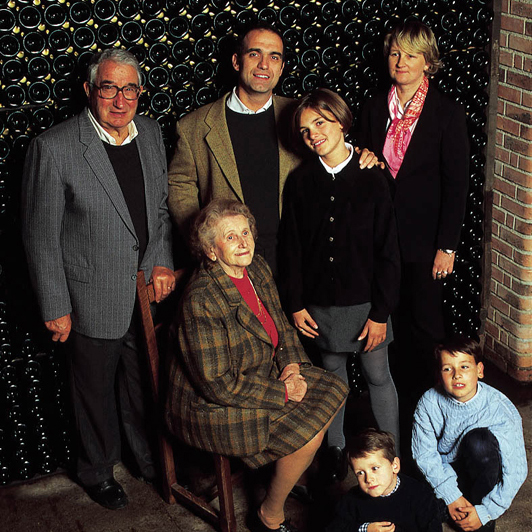
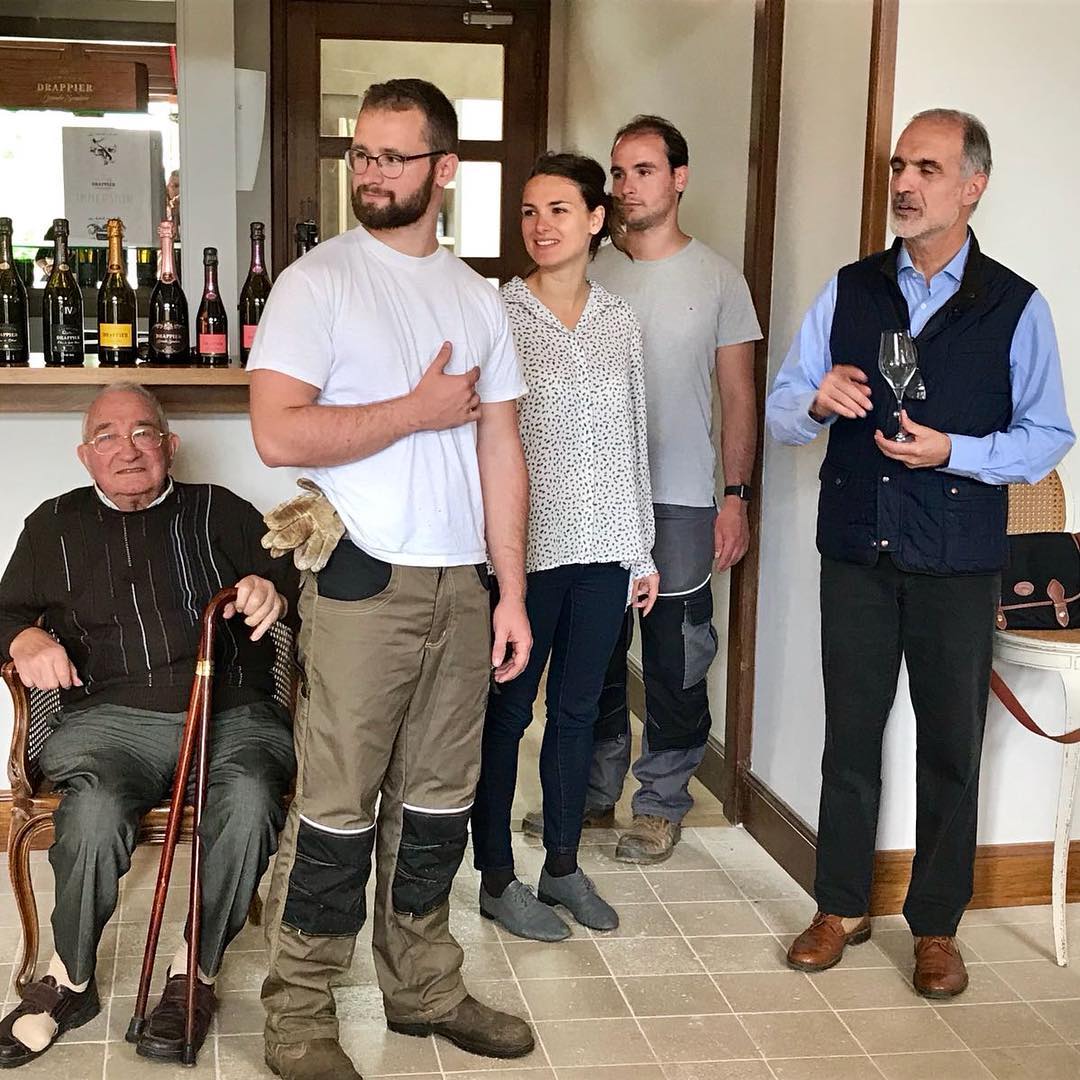
In family photos, it seems as everyone poses on red velvet furniture. What’s the story behind the Drappier red couch?
It has the shape of a mermaid – Sirène in French means mermaid. We have all [this] bright colored old furniture at home, my grandfather would always sit on [it] anytime you come – he’s still alive and he still works – he would just sit in the chair and welcome everyone who is coming. He’s sitting by the fireplace by this red couch.
My father about ten years ago wanted to keep the tradition of welcoming people at home. We live in such a small humble city and my grandmother would always have people coming over and have a very big table of workers and clients, a mix of everything, for lunch and dinner. He just fell for this very unusual shape of Sirène. This is where we all sit sometimes by the fire and just have a glass of champagne at the end of a long day. That’s why it’s kind of iconic at home.
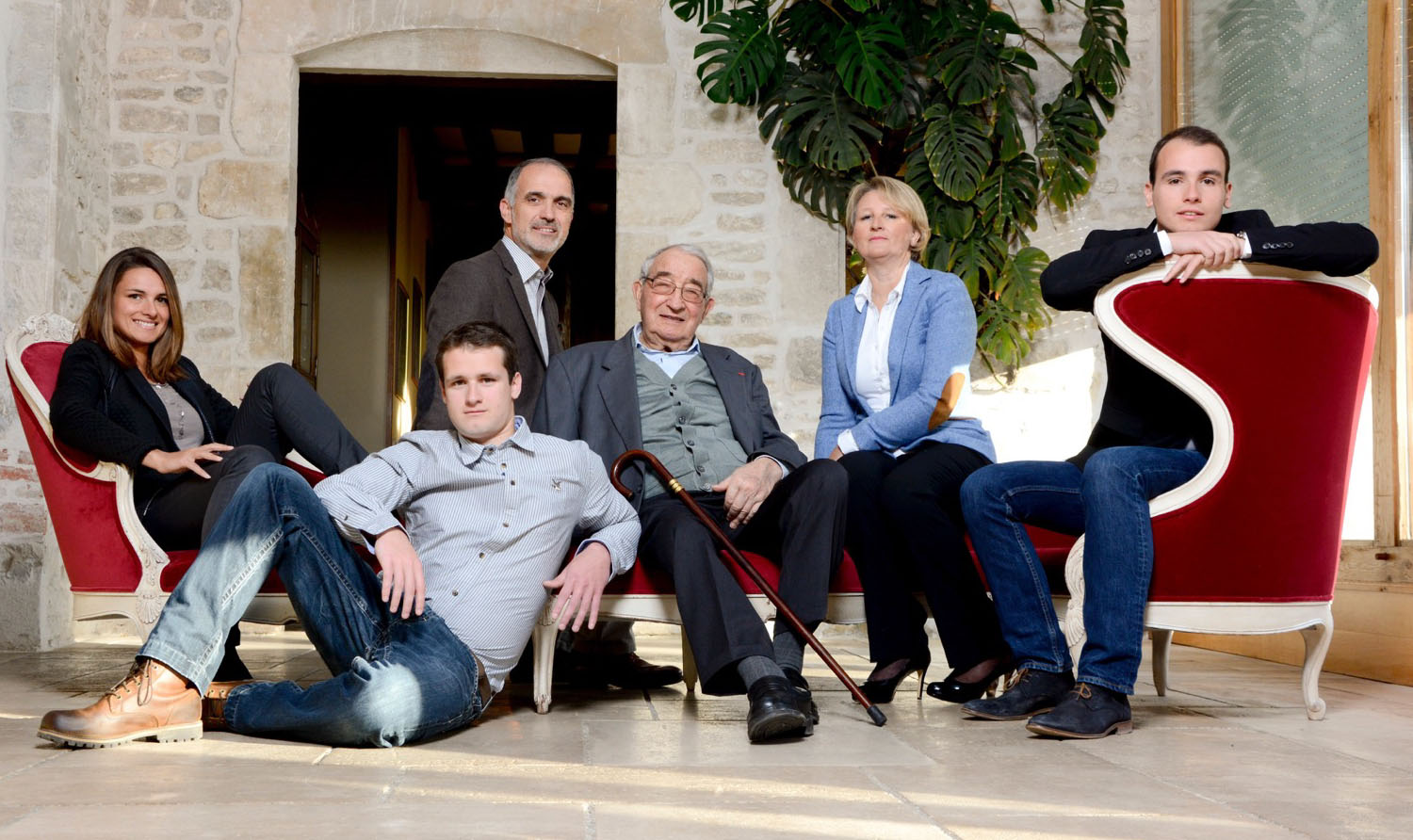
Another icon of the estate seems to be yellow buggy cars. What’s the story behind the yellow car?
The boys in my family, and there’s a lot of them, cause I have two brothers, my father, and my grandfather. They developed a passion for Citroën cars. Citroën was a very well-known brand early in the century, it was usually the presidential car. We have one car that’s the same model that belonged to a French president. This is one of the oldest, it’s the B10 it was built in early 1930s, very old, still works, we actually go through the vineyard in it. It’s an original color from Citroën. When we bought it was the original color and my father had it restored – it’s exactly the color of Drappier. We have five old cars like that, collection cars like that, and drive them around the vineyards.
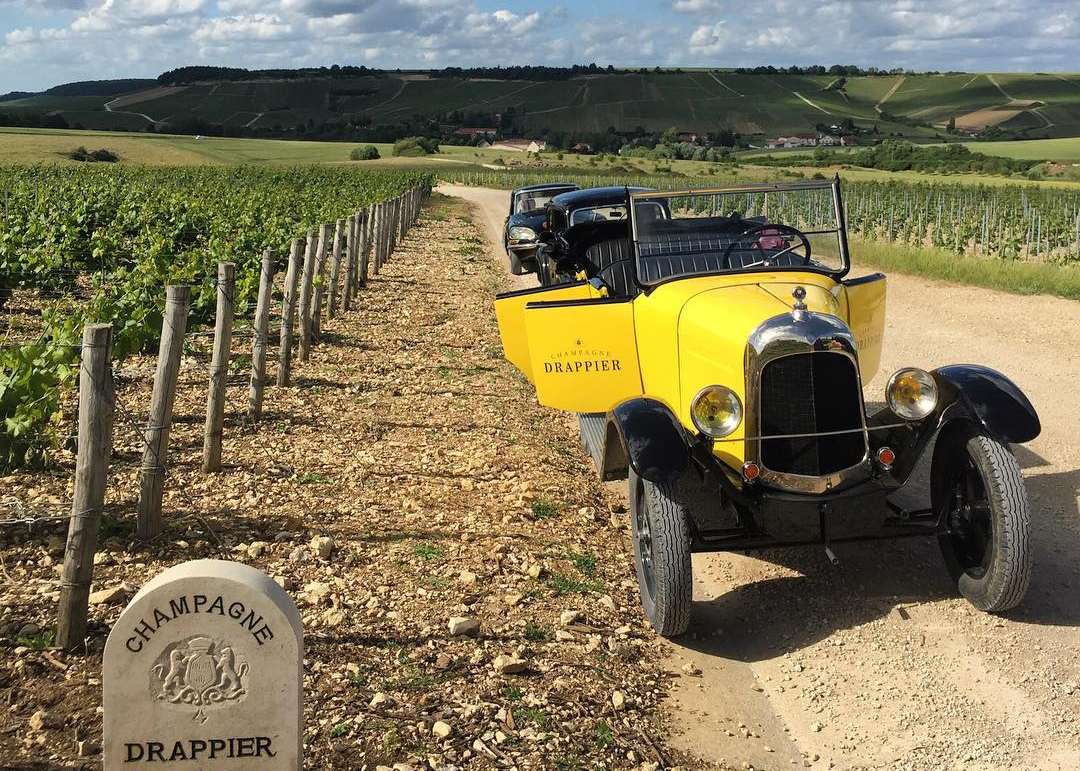
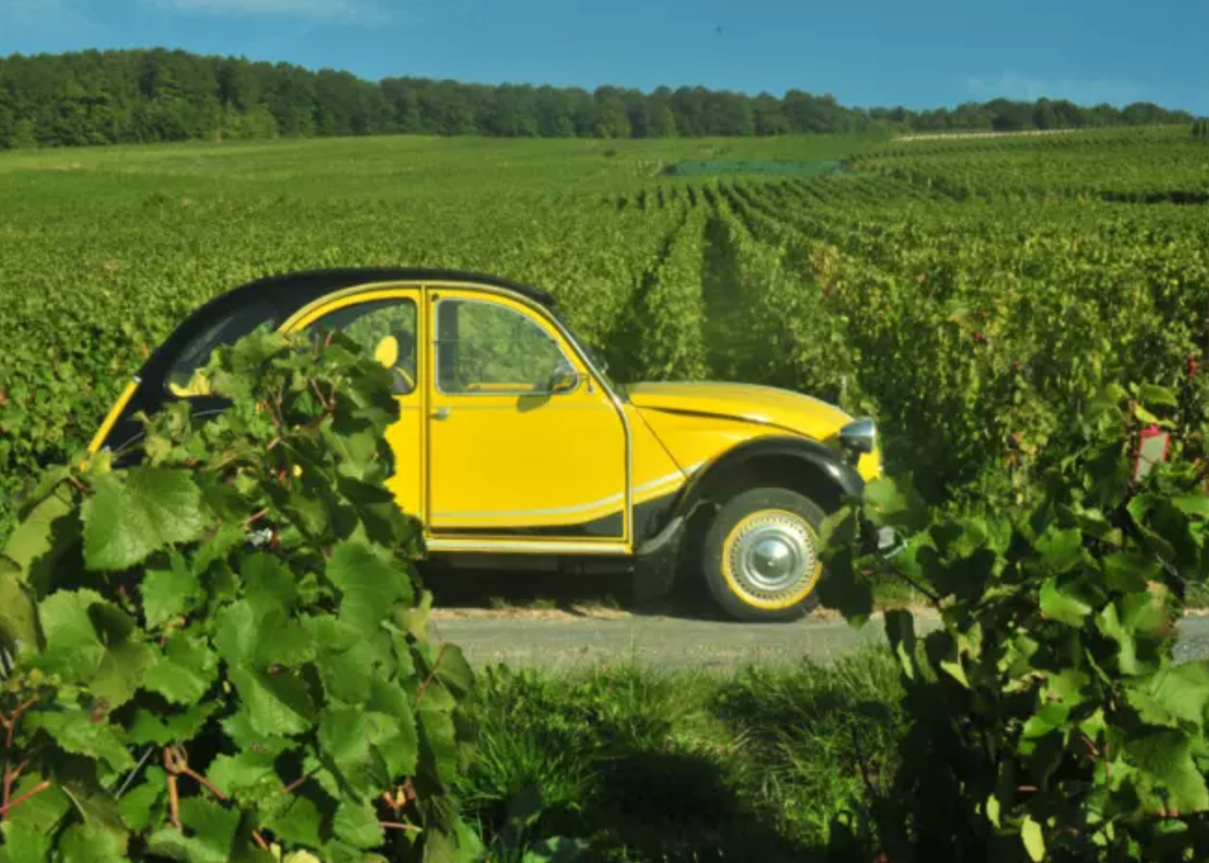
Your grandfather is a big part of the business even at age 92. What is your relationship with him like?
I’m very close to him. I’m his only granddaughter. I was raised half the time by him, I never had any babysitter. I would be raised in the office. My grandfather loves telling all the people he would change my diapers when I was younger and it makes me feel very awkward. Sometimes I’m really happy he doesn’t speak English because he would say whatever comes to his mind.
He’s really the spirit, the soul of our house. He is going to turn 92 at the end of this year. He’s still very active, he meets a lot of people. He likes to just have fun. I think he is an example for me too, to be very focused, be [a] very hard worker but never forget to have fun in your life, because otherwise what’s the point of doing all of this. I think having him around us every day, ten hours a day because he works long hours, and just smiling at people and trying to get to know them is a great inspiration for my brothers and I and to the new generation to come, for sure.
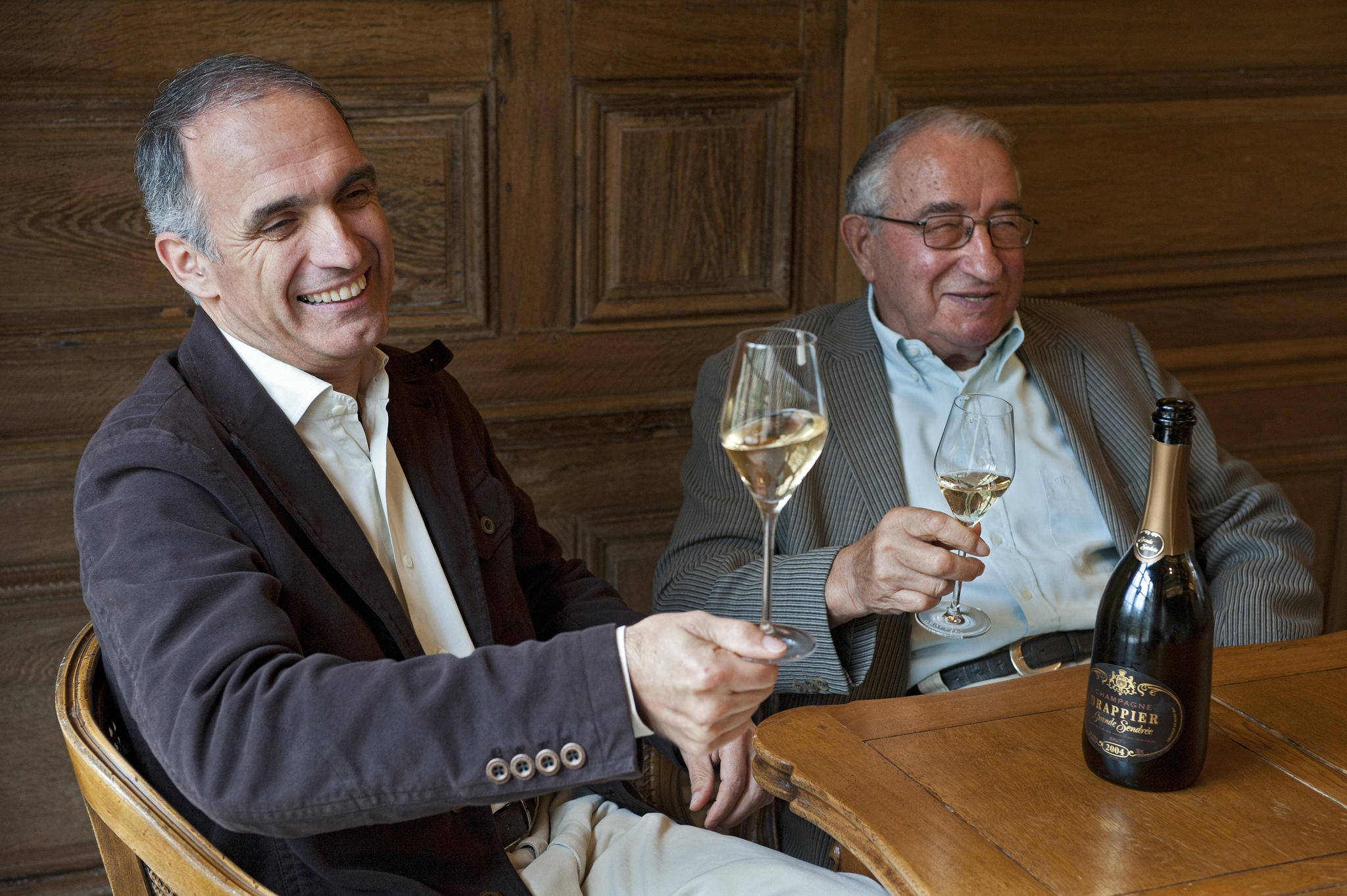
Your father was awarded most sustainable innovator of the year by the Drinks Business last December. How does Drappier practice sustainability?
Too often we talk about organic and vine growing wines. You forget it’s the whole picture that counts. Organic wines are great, [but] it needs to be part of a bigger picture.
My father implemented sustainable agriculture for 25 years – we got the accreditation on 15 hectares, accredited organic in 2014 which makes us one of the biggest players for accredited organic champagne. But he didn’t stop to that viticultural approach, which is still improving. My two younger brothers are both passionate about those aspects of vine growing. Antoine is passionate about horses and he has been working with horses for six years now and we are acquiring one horse so we can farm more of the vines that is now farmed by horses.
Hugo, who is now head of the estate, is really into learning new ways of caring [for] the land. That’s from a viticultural approach, but that extends to winemaking too. My father’s been known for making a very low sulfite champagne, including a non-added sulfite champagne because there was a lot of organic wines that would have a lot of sulfur. Sulfur is an organic component, but it’s not necessarily good for your health.
His approach extends to a bigger vision of what a healthier cleaner champagne should be. That goes up until the end of production, we are completely neutral. We have photogenic panels on all our roofs which help us produce 75 percent of the electricity we need, we have electricity plugs now to plug your cars, we are completely carbon neutral, anything we emit as carbon dioxide is compensated somehow. It’s really every single aspect of the winery has been taken care of to make sure it has [a] reduced impact on environment. I think that shows in the type of wine we make.
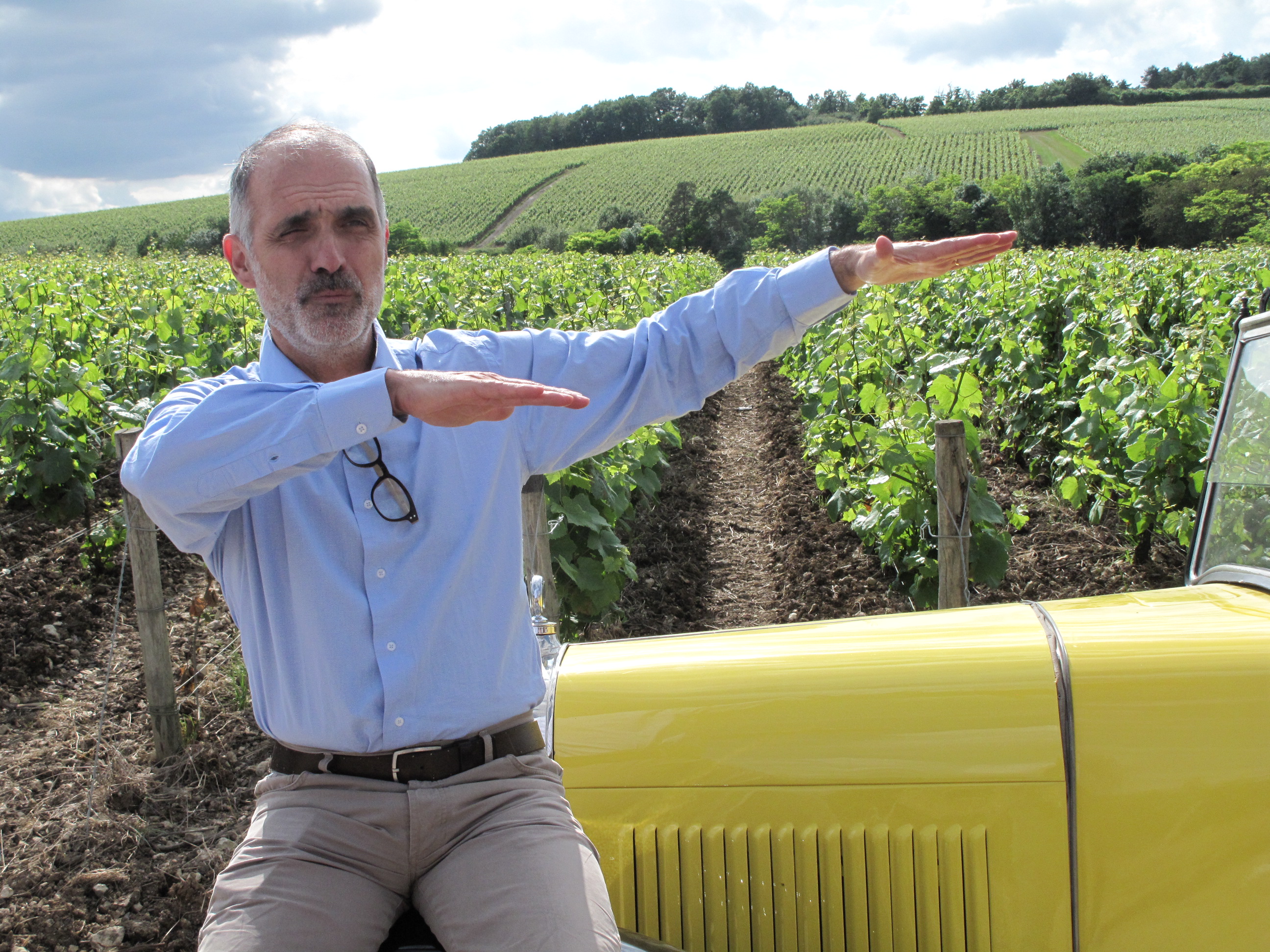
Can you plug in the yellow cars?
Soon! Hugo is actually having a project on changing this, it used to be [a] gas engine – he’s having someone working on replacing all the gas engines to electric engines to go in the vineyards to bring all the workers to the vineyards.
What do you think makes wine so delicious?
That’s maybe a too French answer, but I think it’s the layer of culture and history and geography that makes it more interesting than any other drink. There’s so much to say in one glass, the history, the people. We are a house that is known in my countryside, we’ve known making wines for 2000 years, and we’ve worked with that varietal the Pinot Noir for 800 years. There’s so much depth in what we’re doing and I think it tells in the glass. It’s not something that came out of nowhere, so many people worked on it. Some were fighting, some were having fun. I think that’s why it gets so much attention, too. It’s a very complex drink. Even though you can see it from a very light perspective, and just have some bubbles. I love that aspect of it. [But] if you want to go deeper, there’s so much to say and to feel about everything being gathered in such a tiny space. That’s what I love so much about wine.
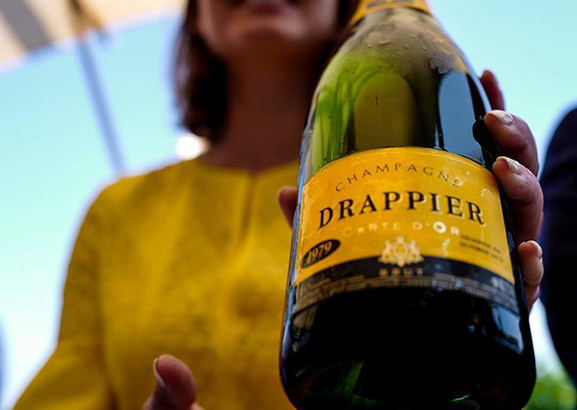
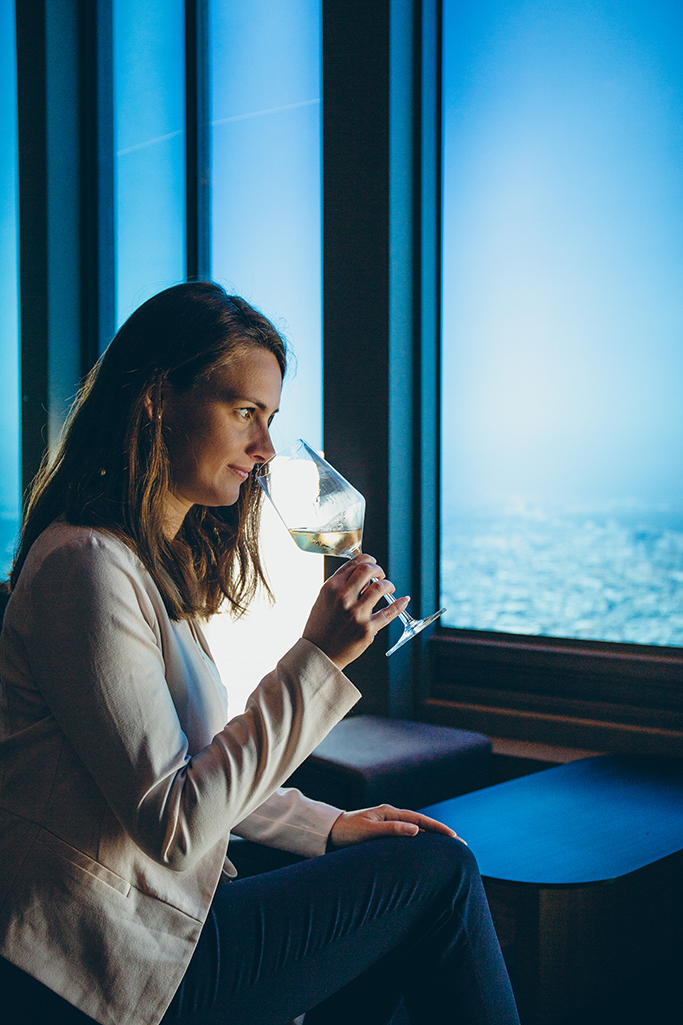
What’s the Drappier line of Champagnes?
The strong signature of Drappier or the flagship is called Carte d’Or. It’s our gold label. It’s the wine that my grandparents designed right after the war, which was driven by our identity which is Pinot Noir. It’s a lot of Pinot Noir, 80% Pinot Noir. Has some nice richness, nice smoothness, very peachy, apricot-y, very dry. All of our champagnes are rather dry. So I’d say Carte d’Or would be our main champagne.
Then there’s the line of the Brut Nature. Our Brut Nature are all 100% Pinot Noir. That came from my father’s idea to express the Pinot Noir in its purest expression on our terroir which is limestone, what we call Jurassic Kimmeridgian limestone – very old type of limestone. He designed this wine to be very dry. [This] one has no added dosage, no added sugar. Very clean, very crisp expression of Pinot Noir. Then we have our rosés, they are 100% Pinot Noir. They are pretty rare in the way we use the traditional method, which is called saignée method. We use skin contact maceration method, we are one of the few houses who don’t mix red wine and white wine to make champagne. This is a pretty unusual type of rosé.
Just to name a few because we have 12 in total, we have our Grande Sendrée, our vintage cuvée, it ages for usually eight, nine, ten years. It’s a single vineyard that used to belong to my grandmother. Special one vineyard, one vintage, prestige cuvée, very driven by the terroir, by the land. The relationship we have to our land is very special, very unique and it shows in each expression of our style.
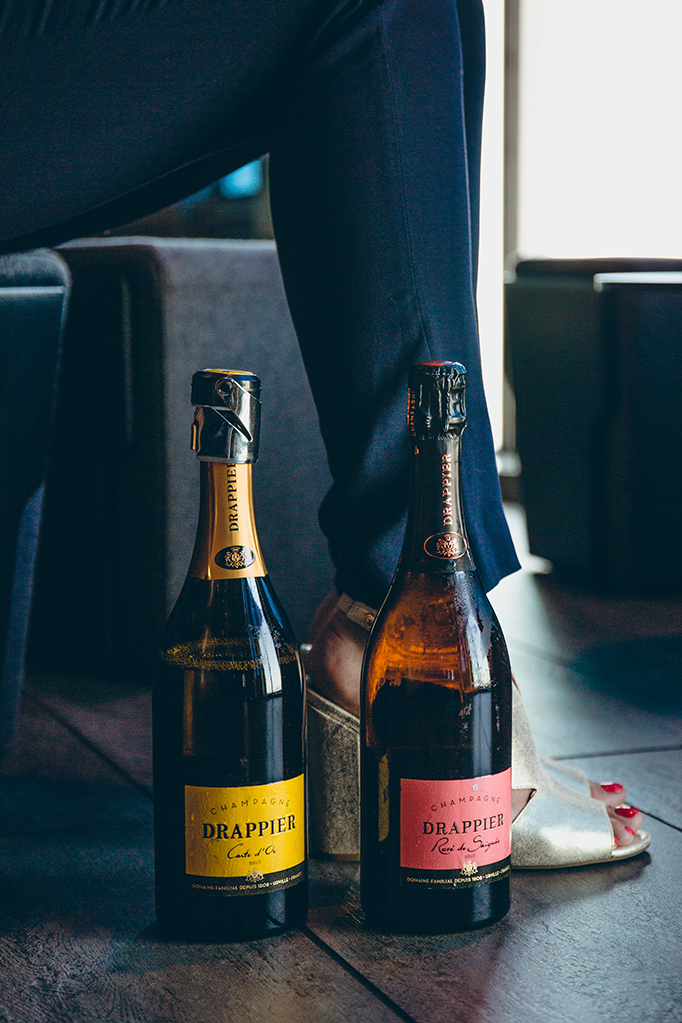
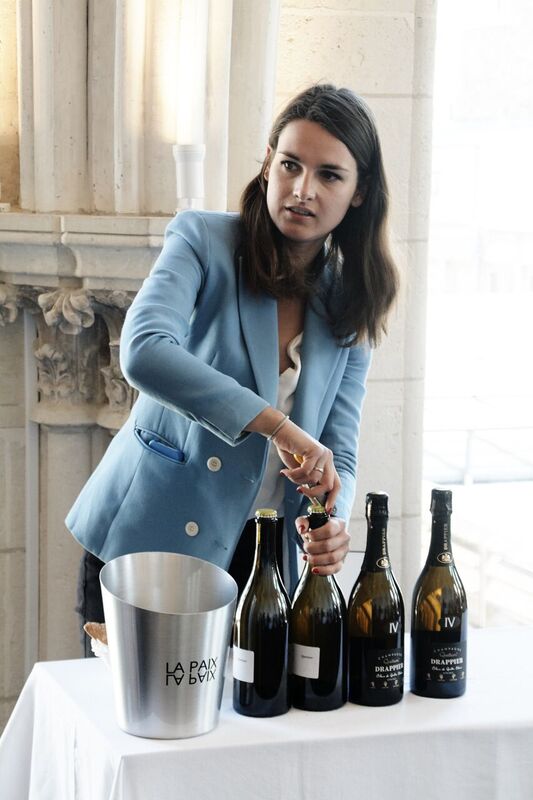
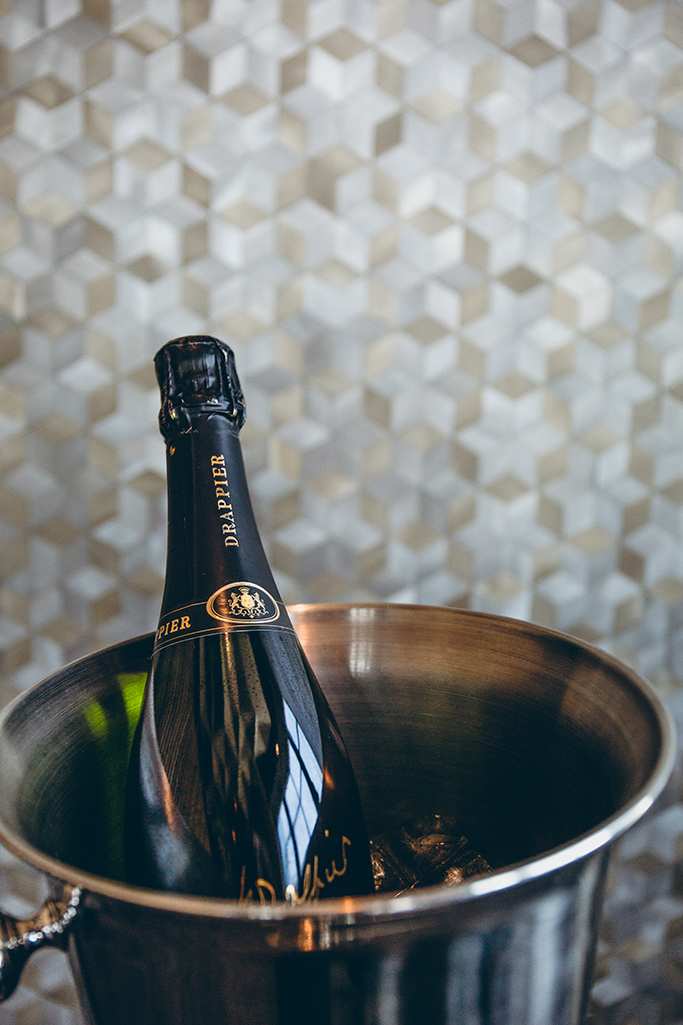
What’s the Drappier relationship with Dreyfus Ashby and Wine Warehouse like?
When I decided to move to [the] U.S. for [a] short period of time to get things going in the U.S., I thought it was really important – I picked Dreyfus because it was like a family. I have this connection with people working at Dreyfus and I now have this in common with wineries represented by Dreyfus – we all share in common the family, the mind, the effort, the passion. It’s great to see that relationship developing, we’ve been with them for four years like we’ve been with Wine Warehouse. It’s always great to come back and to see that we work with the same spirit behind what we’re doing. Sharing common values. We want to be distributed by people who really believe in this style of wine that we make.
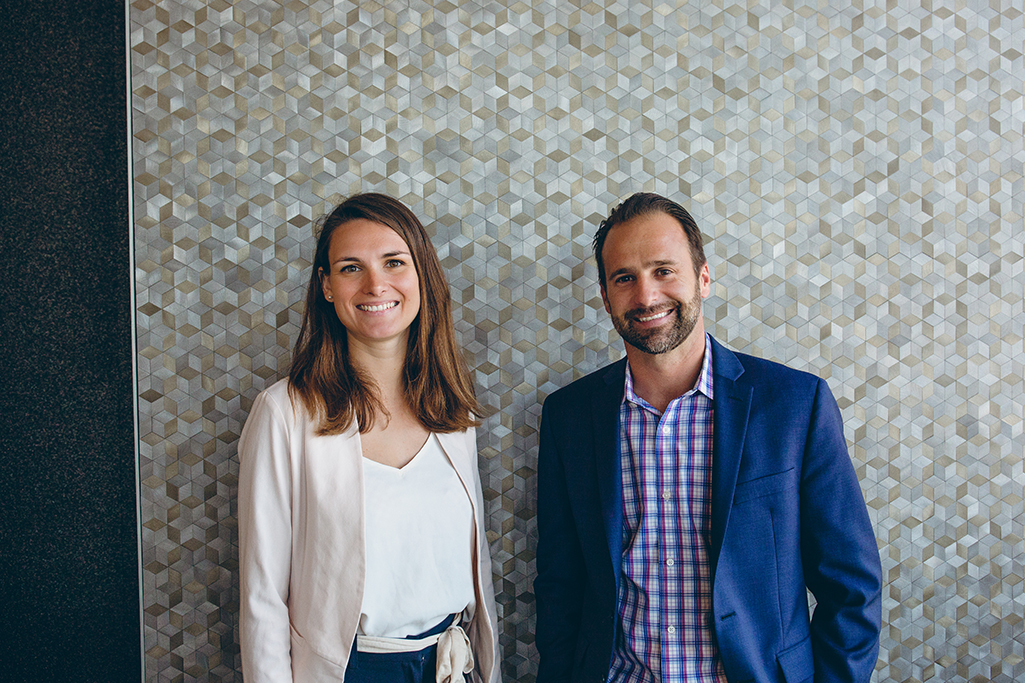
What are some of your favorite parts about working in the wine world?
People. Passionate people. I think I am lucky enough, we are [a] small size, and we are family, so the human values are important. We are small enough and independent enough to decide who we’re going to work with. It’s great because we work with great people. As soon as the conversation is a little bit too business, you just go for something else. We are very free in what we’re doing that’s probably because of the family – don’t do it because you don’t feel like doing it, because this is not a good connection. A great part about working the wine world, especially if you’re independent, is to connect with people you love and to learn from them.
Learning from my dad – sometimes I would have a very – to me – a very hard decision to make, because there’s some kind of deal I don’t feel like, we have this opportunity, but you know I’m not connecting with this person, it’s really hard, it’s really business oriented. And my father, he’ll tell me, you know, we are not doing all of this to be trapped in some kind of discussion that is not led by passion.
This is great, I really love this vision. Instead of “try hard to make it work,” if you don’t feel like it and you know it’s not going to be driven by passion, just let it go. Sometimes it might not be rational decisions, like a public company driven by investors would definitely would not agree with what my father says, but to me it’s a good example because it’s what keeps you connected to what you’re doing and it’s what keeps you connected to the meaning of your life, keep on doing things that you really love.
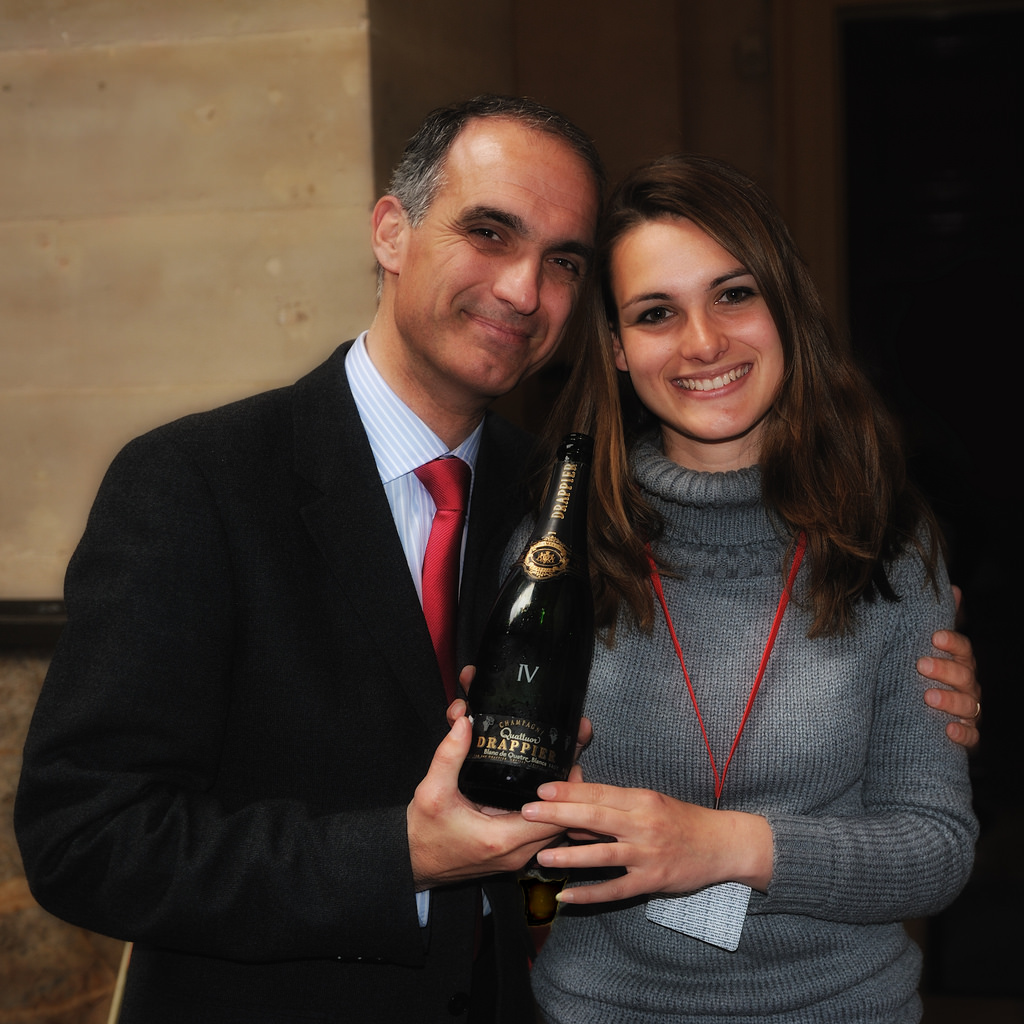
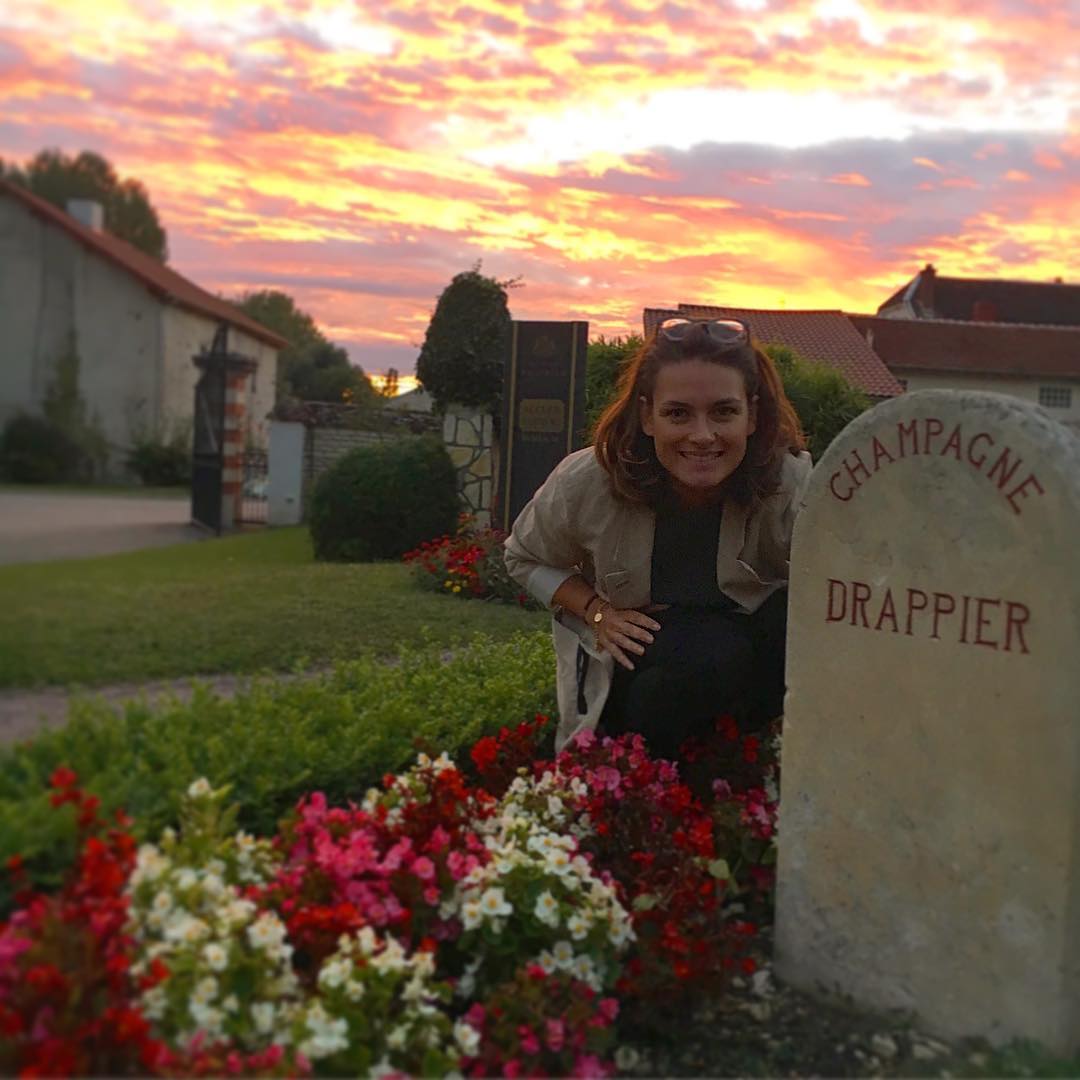
What would people be surprised to know about you?
They would be probably be surprised to know that I have no wine background. My studies and my education is in liberal arts. Philosophy, history, geography was my focus. It’s still very much my focus, literature. People think I’m 100 percent wine person, when I’m not.
Actually I love all the aspects of life. Of reading, I love going to see arts and exhibitions, and travelling for other reasons, not just wine. When you embody a winery, you tend to embody wine and I’m like hey, there’s a lot of things in the life that I really enjoy. That extends your vision to what the world [should] be – that background helps me to understand geography, history, share the story with people.
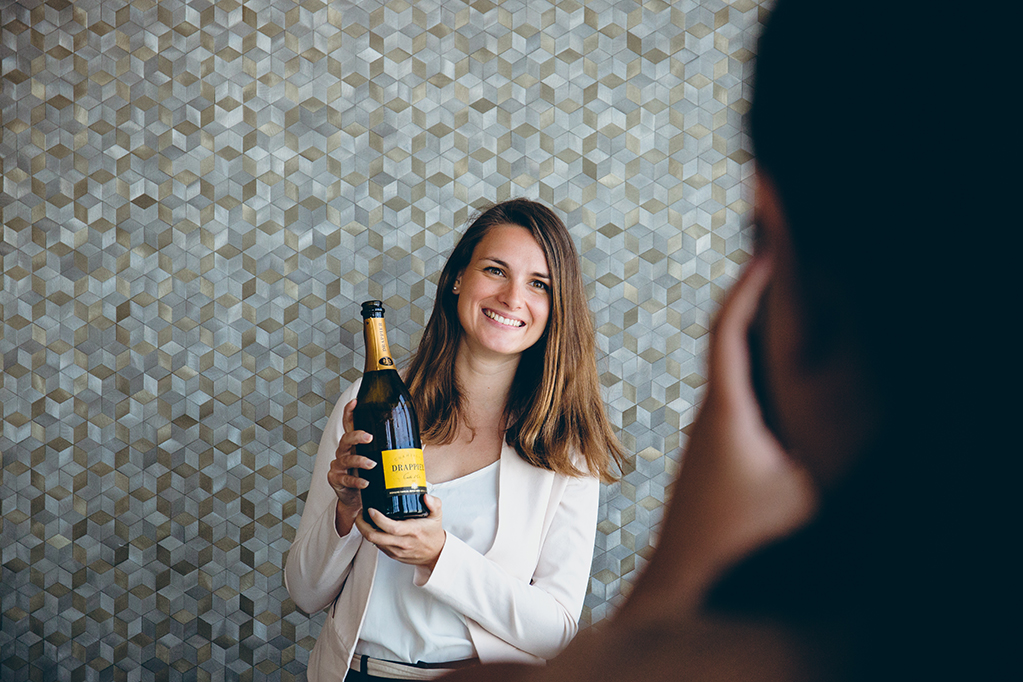
THE DRAPPIER LINE
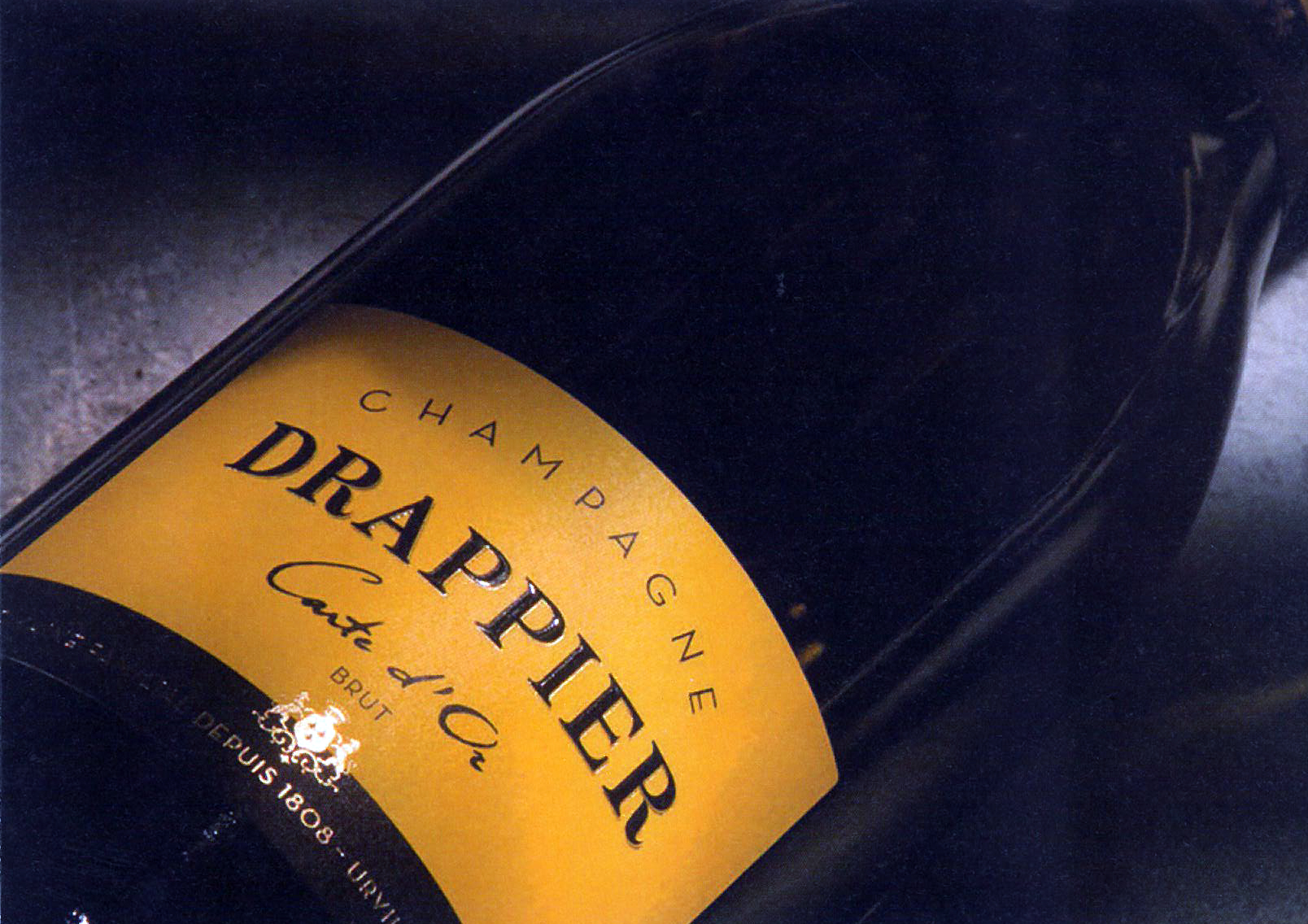
“This bright and zesty Champagne is lightly juicy and appealing, offering flavors of Honeycrisp apple, ripe white cherry, biscuit and pickled ginger. Balanced and lacy in texture, with a lingering, spiced finish.” 92pts Wine Spectator; 90pts Wine Enthusiast
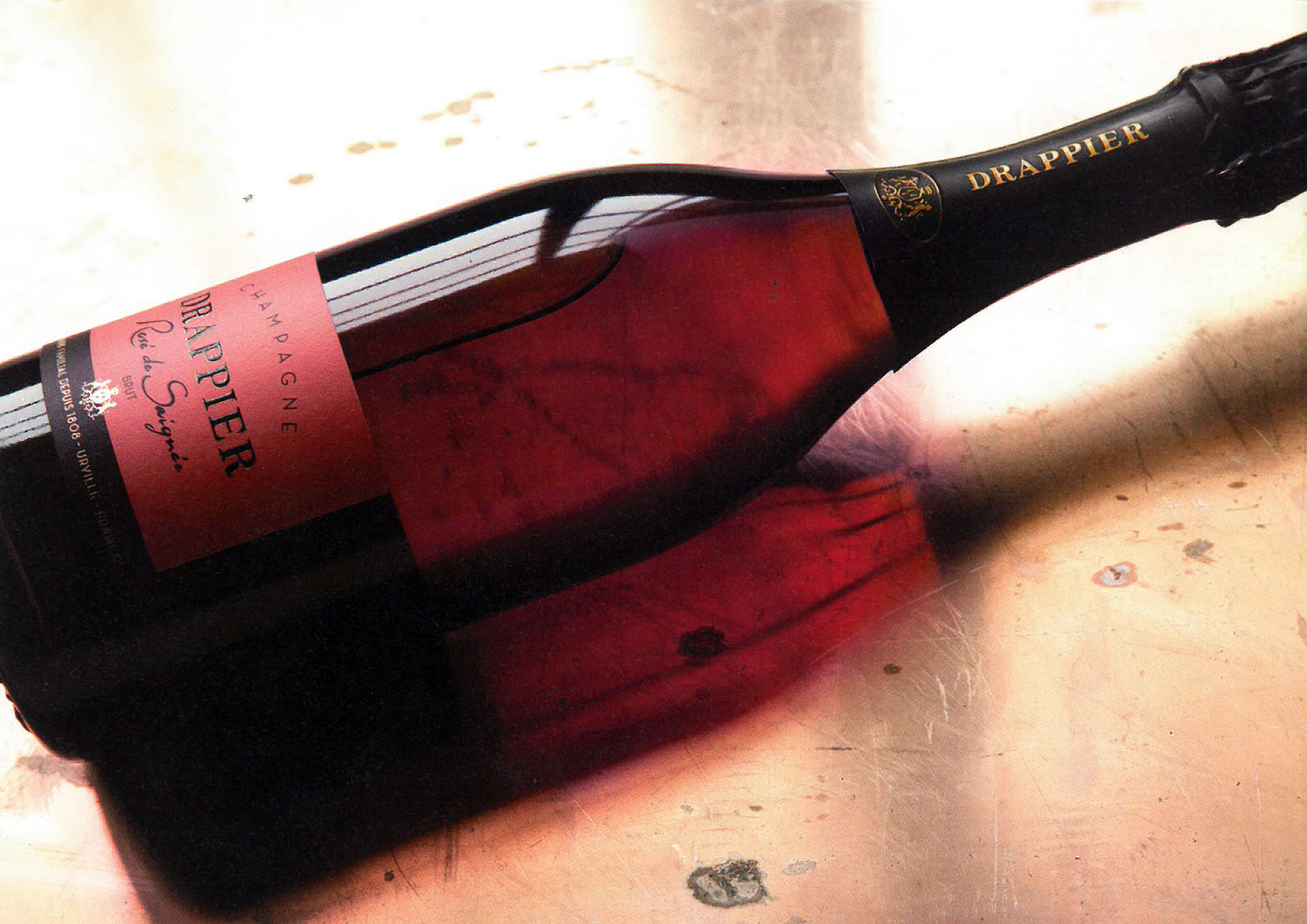
“A graceful rosé that’s lacy and airy in texture, with finely knit acidity enlivening the flavors of ripe cherry and strawberry fruit and lemon chiffon, accented by hints of smoke and spice.” 92pts Wine Spectator; 91pts Wine Advocate; 90pts James Suckling
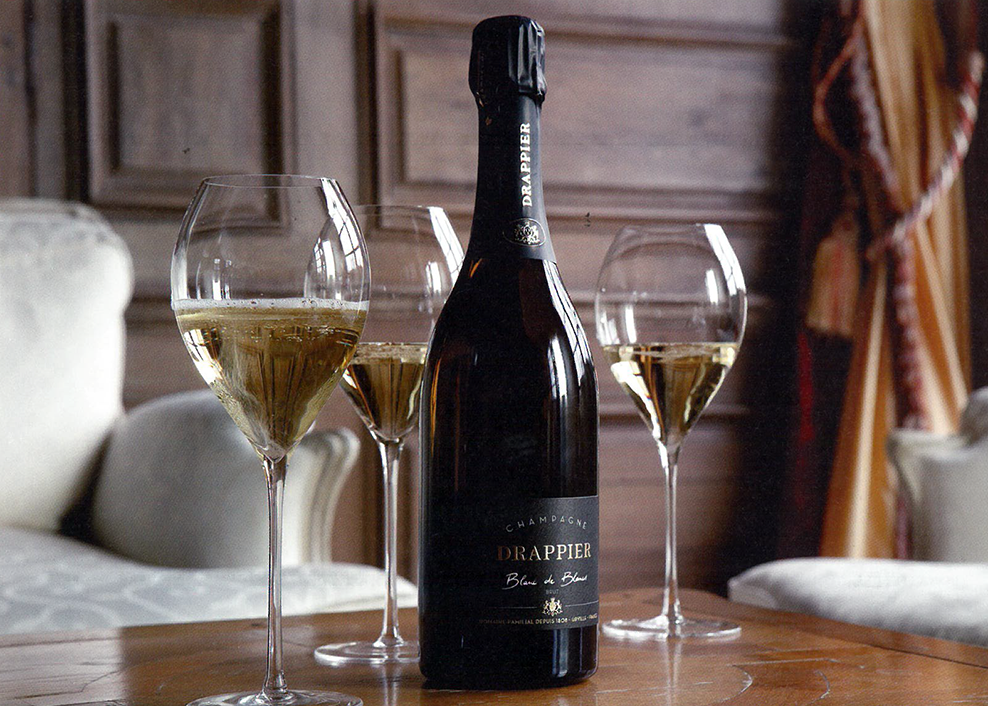
“Beautifully aromatic, with abundant ground spice, graphite and toasted coconut notes, this mouthwatering Champagne features a satiny mousse and a rich profile of dried papaya, glazed nectarine, grated ginger and chopped almond, all set on an elegant frame.” 92pts Wine Spectator
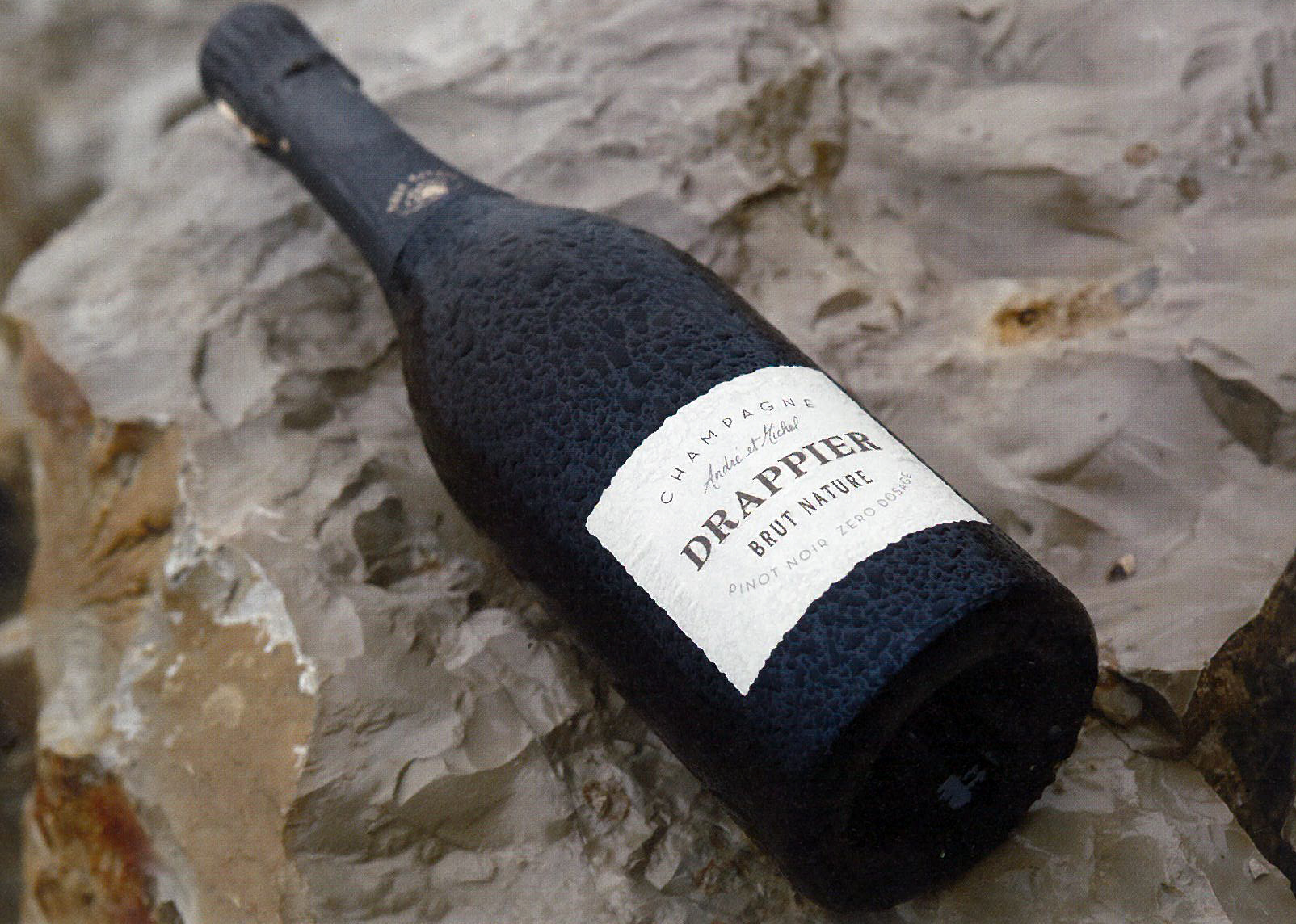
“Floral and spice notes accent the flavors of plump cherry, almond skin, smoke and white peach on the lightly toasty palate of this mouthwatering rosé. Firm, well-knit and chalky in texture.” 92pts Wine Spectator; 90pts Wine Enthusiast
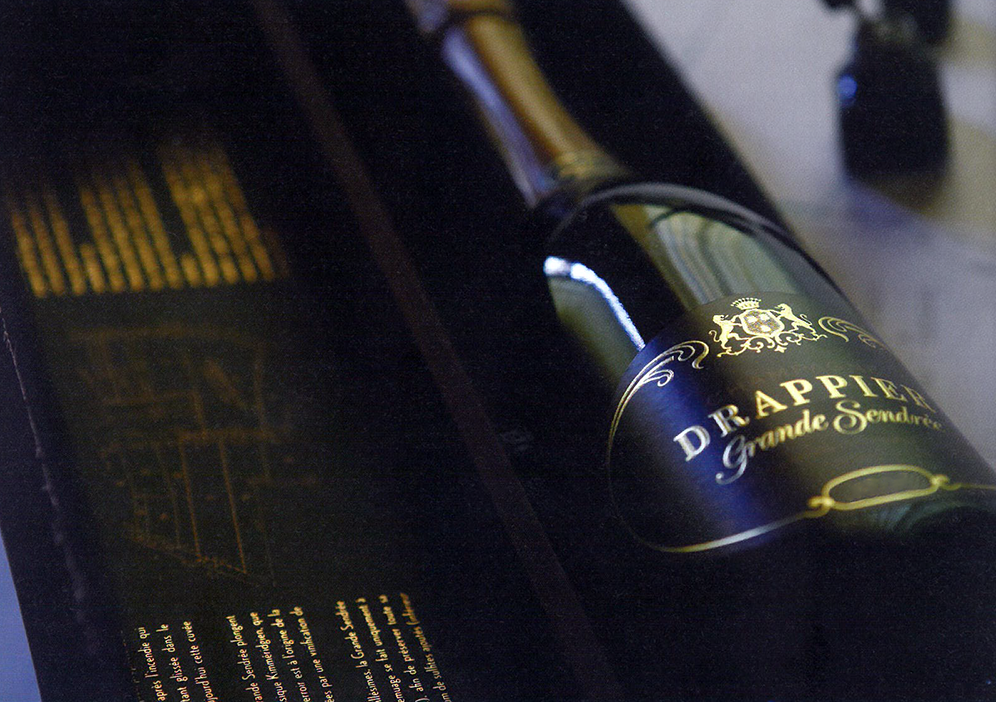
“Minerally on the nose, with brine and smoke accents leading to flavors of cassis, mandarin orange peel and dried white cherry on the buoyant, creamy mousse. Bright and harmonious, with a rich, lasting finish of toast, chopped hazelnut and spice.” 94pts Wine Spectator
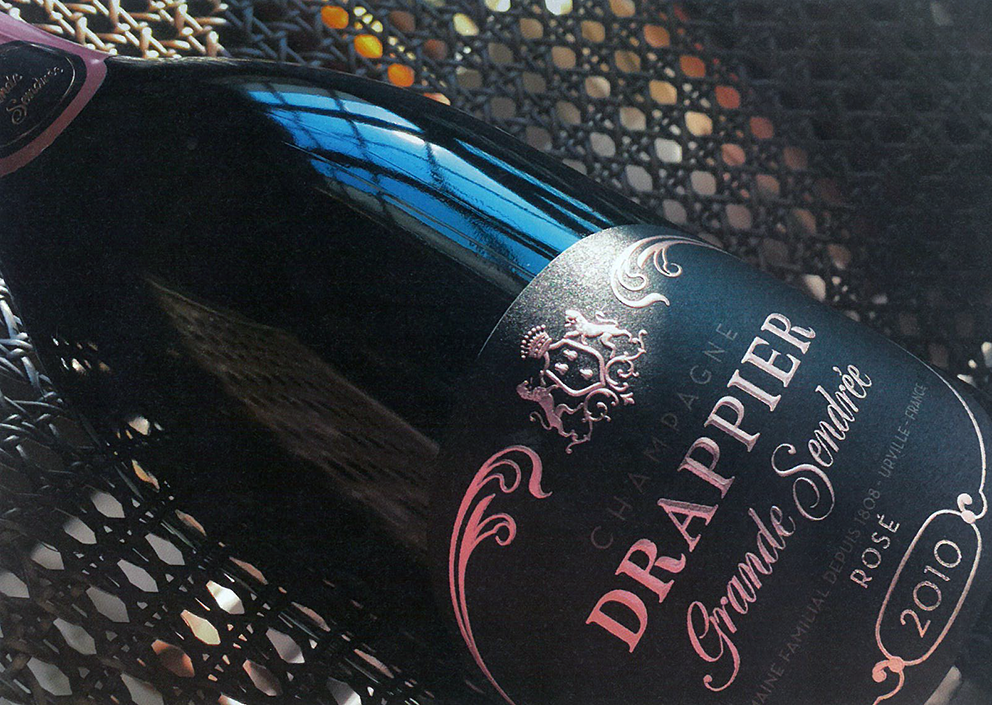
Complex nose opening onto notes of strawberry, raspberry and violets with toasted nuances. Round, supple, with a rather lively spinal column tightening the entity, the palate recalls red fruits; it is fresh and complex at the same time.
